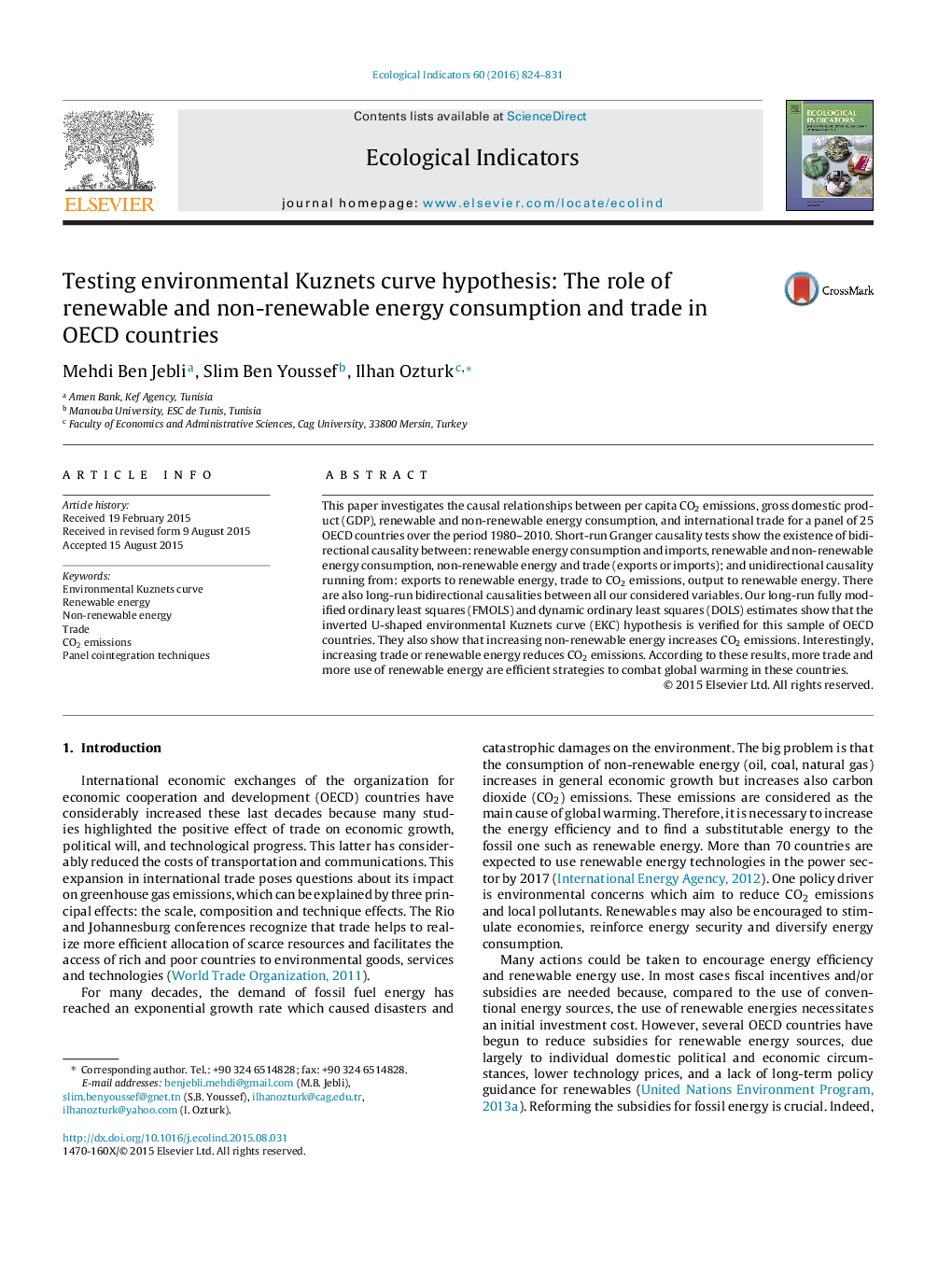| کد مقاله | کد نشریه | سال انتشار | مقاله انگلیسی | نسخه تمام متن |
|---|---|---|---|---|
| 6294168 | 1617141 | 2016 | 8 صفحه PDF | دانلود رایگان |
عنوان انگلیسی مقاله ISI
Testing environmental Kuznets curve hypothesis: The role of renewable and non-renewable energy consumption and trade in OECD countries
دانلود مقاله + سفارش ترجمه
دانلود مقاله ISI انگلیسی
رایگان برای ایرانیان
کلمات کلیدی
موضوعات مرتبط
علوم زیستی و بیوفناوری
علوم کشاورزی و بیولوژیک
بوم شناسی، تکامل، رفتار و سامانه شناسی
پیش نمایش صفحه اول مقاله

چکیده انگلیسی
This paper investigates the causal relationships between per capita CO2 emissions, gross domestic product (GDP), renewable and non-renewable energy consumption, and international trade for a panel of 25 OECD countries over the period 1980-2010. Short-run Granger causality tests show the existence of bidirectional causality between: renewable energy consumption and imports, renewable and non-renewable energy consumption, non-renewable energy and trade (exports or imports); and unidirectional causality running from: exports to renewable energy, trade to CO2 emissions, output to renewable energy. There are also long-run bidirectional causalities between all our considered variables. Our long-run fully modified ordinary least squares (FMOLS) and dynamic ordinary least squares (DOLS) estimates show that the inverted U-shaped environmental Kuznets curve (EKC) hypothesis is verified for this sample of OECD countries. They also show that increasing non-renewable energy increases CO2 emissions. Interestingly, increasing trade or renewable energy reduces CO2 emissions. According to these results, more trade and more use of renewable energy are efficient strategies to combat global warming in these countries.
ناشر
Database: Elsevier - ScienceDirect (ساینس دایرکت)
Journal: Ecological Indicators - Volume 60, January 2016, Pages 824-831
Journal: Ecological Indicators - Volume 60, January 2016, Pages 824-831
نویسندگان
Mehdi Ben Jebli, Slim Ben Youssef, Ilhan Ozturk,